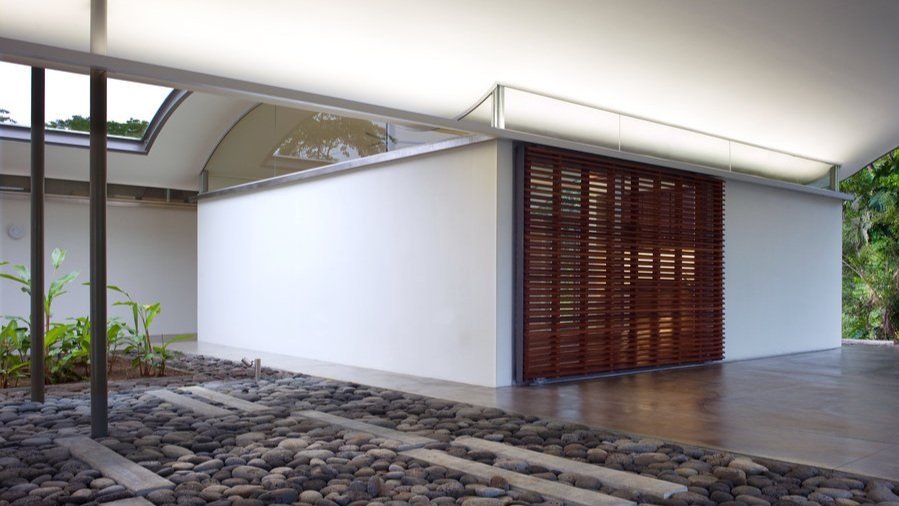In the Principal Officer’s residence. this means tailoring spaces to fit diplomatic, representational, domestic, and guest activities, each separated by gardens affording privacy and discreet access while inviting the landscape into the house.
The construction of the residence pays homage to Samoan tradition but is technologically advanced. It uses local materials in its block walls and hardwood screens but relies on modern technology for its roof and columns, which were imported from New Zealand. Its lightweight roof, thin steel columns, and masonry walls work together to resist earthquakes, a frequent occurrence on this voltaic island.
The roof shape, made possible with factory-curved steel beams, collects monsoon rainwater and channels it away from the building where it falls dramatically onto lava stone beds.
The traditional Samoan fale inspired our design of the Principal Officer’s Residence in Apia, Samoa. Adapting its climatic strategies, we sought to create a marriage of Samoan and American cultures for the residence of the American Ambassador.
The traditional fale’s vernacular form consists of a high, domed, thatched roof raised on a structure of wood columns. The roof provides shelter from the sun and rain while allowing outside air to circulate into the upper reaches of the structure, ventilating through the top.
The undulating roof and thin pilotis of the new building reflect the skeletal structure and sheltering roof of the fale as interpreted through a modern sensibility and contemporary building techniques.
Client
US Department of State, Bureau of Overseas Buildings
Status
Constructed
Info
2011
Residential
12,949 sf
Apia, Samoa
Awards
Chicago Athenaeum American Architecture Award











